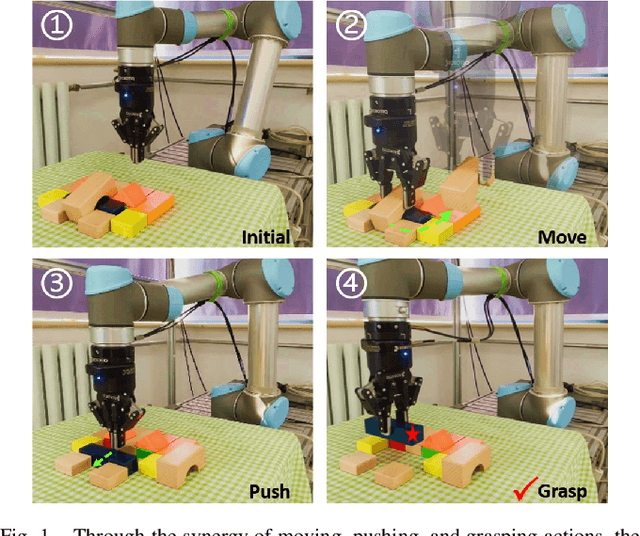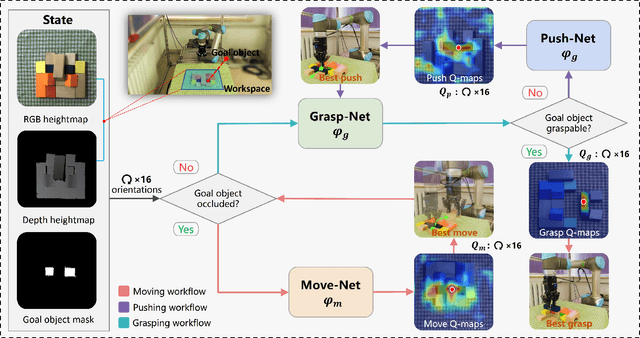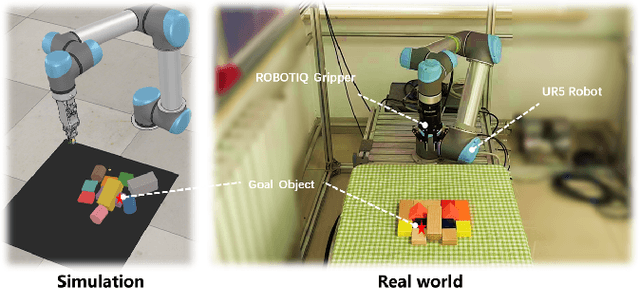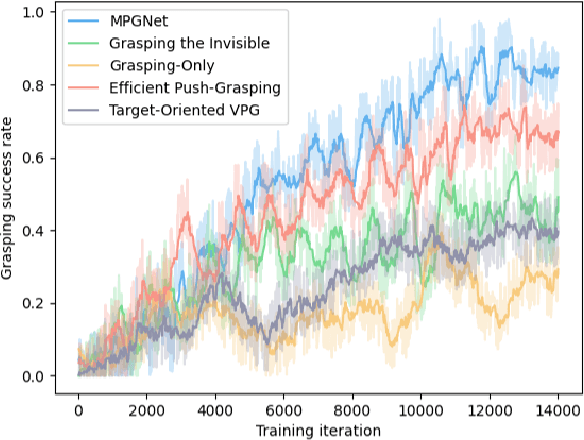Xiaolei Li
MPGNet: Learning Move-Push-Grasping Synergy for Target-Oriented Grasping in Occluded Scenes
Aug 20, 2024



Abstract:This paper focuses on target-oriented grasping in occluded scenes, where the target object is specified by a binary mask and the goal is to grasp the target object with as few robotic manipulations as possible. Most existing methods rely on a push-grasping synergy to complete this task. To deliver a more powerful target-oriented grasping pipeline, we present MPGNet, a three-branch network for learning a synergy between moving, pushing, and grasping actions. We also propose a multi-stage training strategy to train the MPGNet which contains three policy networks corresponding to the three actions. The effectiveness of our method is demonstrated via both simulated and real-world experiments.
3-D Distributed Localization with Mixed Local Relative Measurements
Dec 18, 2023Abstract:This paper studies 3-D distributed network localization using mixed types of local relative measurements. Each node holds a local coordinate frame without a common orientation and can only measure one type of information (relative position, distance, relative bearing, angle, or ratio-of-distance measurements) about its neighboring nodes in its local coordinate frame. A novel rigidity-theory-based distributed localization is developed to overcome the challenge due to the absence of a global coordinate frame. The main idea is to construct displacement constraints for the positions of the nodes by using mixed local relative measurements. Then, a linear distributed localization algorithm is proposed for each free node to estimate its position by solving the displacement constraints. The algebraic condition and graph condition are obtained to guarantee the global convergence of the proposed distributed localization algorithm.
Training a U-Net based on a random mode-coupling matrix model to recover acoustic interference striations
Mar 24, 2020Abstract:A U-Net is trained to recover acoustic interference striations (AISs) from distorted ones. A random mode-coupling matrix model is introduced to generate a large number of training data quickly, which are used to train the U-Net. The performance of AIS recovery of the U-Net is tested in range-dependent waveguides with nonlinear internal waves (NLIWs). Although the random mode-coupling matrix model is not an accurate physical model, the test results show that the U-Net successfully recovers AISs under different signal-to-noise ratios (SNRs) and different amplitudes and widths of NLIWs for different shapes.
Sound source ranging using a feed-forward neural network with fitting-based early stopping
Apr 01, 2019


Abstract:When a feed-forward neural network (FNN) is trained for source ranging in an ocean waveguide, it is difficult evaluating the range accuracy of the FNN on unlabeled test data. A fitting-based early stopping (FEAST) method is introduced to evaluate the range error of the FNN on test data where the distance of source is unknown. Based on FEAST, when the evaluated range error of the FNN reaches the minimum on test data, stopping training, which will help to improve the ranging accuracy of the FNN on the test data. The FEAST is demonstrated on simulated and experimental data.
 Add to Chrome
Add to Chrome Add to Firefox
Add to Firefox Add to Edge
Add to Edge